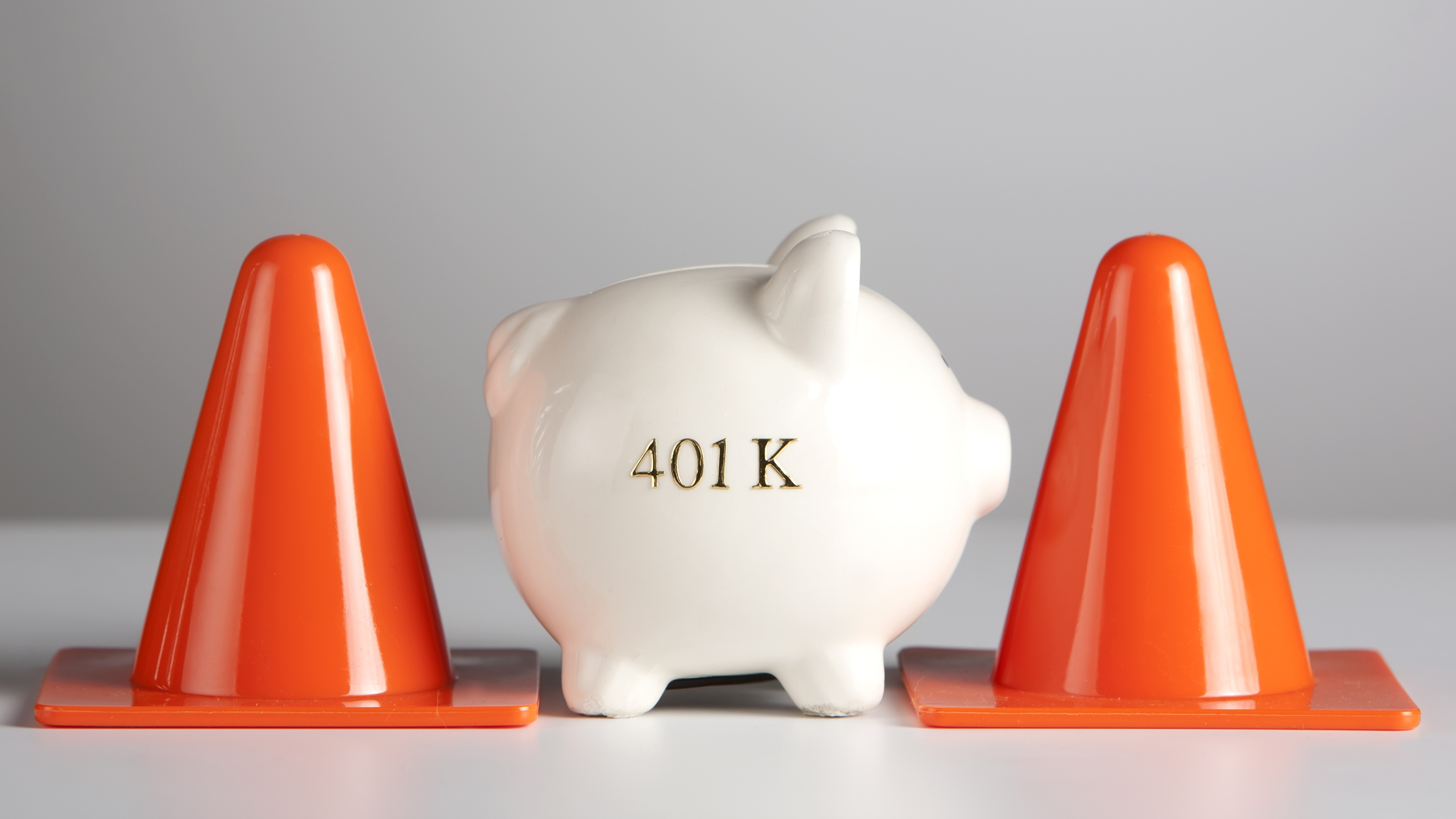6 Critical Questions to Ask Before Investing in a Stock
Before you make any investment, figure out your answers to these questions to help minimize your risk.

Someone much wiser than me once said that if you don't know where you're going, any path will get you there. This couldn't be truer than when it comes to investing. And often it will be a lot more dangerous. So there's never a bad time to become wiser about your investing process. If you learn something today that you didn't know yesterday, it will help you tomorrow.
Of course, you have to understand that investment risks cannot be eliminated, but they can be understood and managed to some degree. If you start the process by knowing the answers to the six questions that follow, your risks should be greatly reduced.
1. What investment do you want to buy?
Whether you're interested in stocks, mutual funds, exchange traded funds or other investment, what you buy is really up to you (and not the focus of this particular article). Whatever your process of selection, I assume you have found something you feel good about for the right reasons. My team and I certainly have a very clear process for selecting the investments we choose for our clients, and you should too.
From just $107.88 $24.99 for Kiplinger Personal Finance
Be a smarter, better informed investor.

Sign up for Kiplinger’s Free Newsletters
Profit and prosper with the best of expert advice on investing, taxes, retirement, personal finance and more - straight to your e-mail.
Profit and prosper with the best of expert advice - straight to your e-mail.
2. Is now a good time to buy it?
This is a tougher one to answer. It will likely depend on several issues: Is the overall market positive or negative? Is the sector or asset class you are looking at positive or negative? Is the price attractive? Based on what criteria? The list of considerations may seem daunting, but all of these questions are important to understand before investing.
3. How much of it should you buy?
This has proven to be the most misunderstood question that we've come across over time, and I'll provide a more detailed answer in a moment.
4. What do you do with it if it's a winner?
Do you have a specific plan of keeping it or selling it at some point? Successful investors have this determined before they buy.
5. What do you do with it if it's a loser?
Not all good ideas work out as planned. You need to know at what point you will dump a loser, and you need to know that price point before you buy it. Otherwise, all of this becomes a guessing game.
6. What do you do with it if it's simply a laggard?
This is something that most people we've had this discussion with have never thought about. If your dollars are just sitting there in a lagging investment, are there other investments that would be more productive or have more potential? Again, having a process to determine this in the beginning will result in better investment outcomes.
We're now back to the issue of how much to buy. This is by far the most difficult question. And one that rarely has a satisfactory answer, in my opinion.
Rather than simply picking an arbitrary percentage of your overall portfolio or an arbitrary number of shares, why not base it on how much risk you want to take with that specific investment?
Let's examine this process: We'll assume you have a $500,000 portfolio and are willing to risk 1% of that on any given investment choice. That equals $5,000 of risk. Let's say the stock is selling for $40 per share, and you have determined that if it falls to $35 you will sell it because it's a loser as discussed above. You now have $5 of risk—the current price minus the stop loss price—so divide the risk of $5 into the portfolio risk of $5,000, and you get 1,000. You buy 1,000 shares.
You have taken 1% risk to buy the stock, and it represents $40,000 of value, or 8.0% of your portfolio. Does that seem like too high of a percentage? Why? You have clearly defined the amount you are willing to risk, and logical math does the work. There is nothing arbitrary here.
If the price falls to $35, you sell it. It's a loser.
If the price moves up to $50, things are looking good. You could sell it or simply move up your stop loss price up to $45, which will now represent your 1% risk factor for this specific investment that you had to start with.
You can keep doing this if the stock continues to increase in price. Or you could sell some of it or all of it, take your profits and move on to the next idea.
You now have the answers to all six of the questions asked. What, when, how much, as well as what to do if it's a winner, loser, or laggard.
Isn't it nice to have the answers before the question is asked? Of course it is!
This process gives you answers and should also give you better investment results without the worry of not knowing what you don't know.
Charles C. Scott, Accredited Investment Fiduciary®, has more than 30 years of experience in the financial services industry. "Our mission is to help our clients discover, design and live the life that they want to live by matching their finances with their visions, values and goals."
Profit and prosper with the best of Kiplinger's advice on investing, taxes, retirement, personal finance and much more. Delivered daily. Enter your email in the box and click Sign Me Up.

Charles C. Scott, Accredited Investment Fiduciary®, has more than 30 years of experience in the financial services industry. He developed and managed an institutional sales department for Washington Mutual, and then served as the Northwest Regional Manager for MFS, America's oldest mutual fund company. Since 1993, he has been an independent adviser, focusing on providing his clients with objective, unbiased planning and investment advice. He has written for the Wall Street Journal, CFO Magazine and other publications.
-
 Credit Cards That Actually Reward Your Loyalty
Credit Cards That Actually Reward Your LoyaltyIf you have bank or investment accounts with your credit card issuer, you may qualify for extra cash back, waived fees and other benefits.
-
 The 10 Most Valuable Vacation Destinations for Retirees in 2026
The 10 Most Valuable Vacation Destinations for Retirees in 2026Whether traveling within the U.S. or internationally, retirees can find a perfect blend of relaxation and excitement in these destinations, all while staying within budget.
-
 Will Taxes Shred Your 401(k) or IRA During Your Retirement? It's Very Likely
Will Taxes Shred Your 401(k) or IRA During Your Retirement? It's Very LikelyConventional wisdom dictates that you save in a 401(k) now and pay taxes later, but turning that rule on its head could leave you far better off. A financial planner explains why.
-
 More Retirees Are Renting: Should You? A Financial Adviser Weighs In
More Retirees Are Renting: Should You? A Financial Adviser Weighs InIn some ways, renting is cheaper, more flexible and easier, but unless you understand the implications for your taxes and health costs, it might not be for you.
-
 I'm a Real Estate Investing Pro: This 1031 Exchange Strategy Can Triple Your Cash Flow
I'm a Real Estate Investing Pro: This 1031 Exchange Strategy Can Triple Your Cash FlowSavvy investors can use 1031 exchanges to unlock value by moving capital across markets in a play called geographic arbitrage. These tax implications can make or break the strategy.
-
 I'm an Insurance Pro: Everyone Needs to Prepare for Earthquakes, Even if You Don't Live Near a Fault Line
I'm an Insurance Pro: Everyone Needs to Prepare for Earthquakes, Even if You Don't Live Near a Fault LineHere are my tips for what to do before, during and after an earthquake. The more prepared you are, the more you'll be able to keep your wits about you if it happens.
-
 Where There's a Will, There's a Way Your Assets Will Be Distributed as You Wish
Where There's a Will, There's a Way Your Assets Will Be Distributed as You WishYour will is the backbone of a strong, adaptable estate plan that ensures what you leave behind goes to your selected beneficiaries. Without a will, state laws determine who gets your assets.
-
 I'm a Financial Adviser: This Is What You're Really Losing if You Cut Back on Your 401(k) Contributions
I'm a Financial Adviser: This Is What You're Really Losing if You Cut Back on Your 401(k) ContributionsMissing out on the benefits of the employer match and compounding growth could force you to work longer and lower your standard of living in retirement. Here are some alternative options.
-
 Preferred Bank Stocks: The Investment Retirees (and Others) May Be Missing Out On
Preferred Bank Stocks: The Investment Retirees (and Others) May Be Missing Out OnMost large banks issue preferred stocks that pay out fixed dividends, often with higher yields than bonds. Should you make room for them in your portfolio?
-
 Don't Let Your Equity Compensation Trip You Up: A Financial Expert's Guide
Don't Let Your Equity Compensation Trip You Up: A Financial Expert's GuideStock options, RSUs and other executive perks can come with some serious strings attached. To avoid a nasty tax surprise, you need a plan.